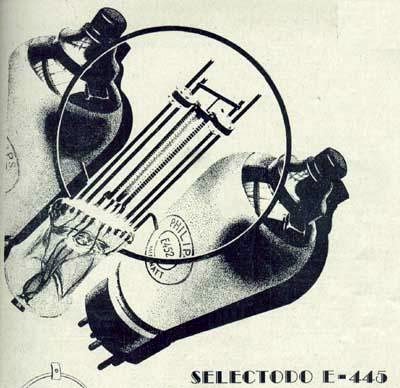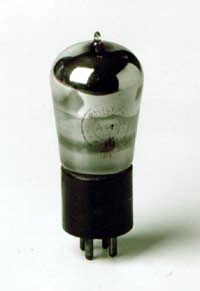The grid, plate and cathode
of a triode form an electrostatic system, each electrode acting
as one plate of a small capacitor. The capacitances are those
existing between the grid and plate, plate and cathode, and
grid and cathode. These capacitances are known an interlectrode
capacitance. Generally, the capacitance between the grid and
plate is the most importance. This capacitance may act to produce
undesire coupling between the input circuit - the circuit between
the grid and cathode - and the output circuit - the circuit
between the plate and cathode. This coupling is undesirable
as it may cause instability and unsatisfactory
performance of the amplifier.
In order to decrease the capacitance between the grid and the
plate it was mounted an additional electrode, or screen and
in this way since the valve had now four inner electrical elements
it was called as a tetrode.
The screen was mounted between the grid and the plate and acted
as an electrostatic shield and thus reducing the grid-to-plate
capacitance.
However, in the screen-grid valves, it was noticed an undesirable
electrical phenomenon kown as secondary emission. In reality
it was an emission caused by the bombardment of an electrode
by the electrons from the original cathode emission. In this
type of valve, the proximity of the positive screen to the plate
it arises a strong attraction to these secondary electrons stream
in such away the plate voltages swings lower than the screen
voltage.
|
 |
|
|
Several types of tetrodes made in
the USA between 1925 - 1933:
a)type 124
b)type 35
c)type 36 |
|
 |
| Tetrode made by Philips circa 1928 type
A442 used in RF stages. |
|
|
|